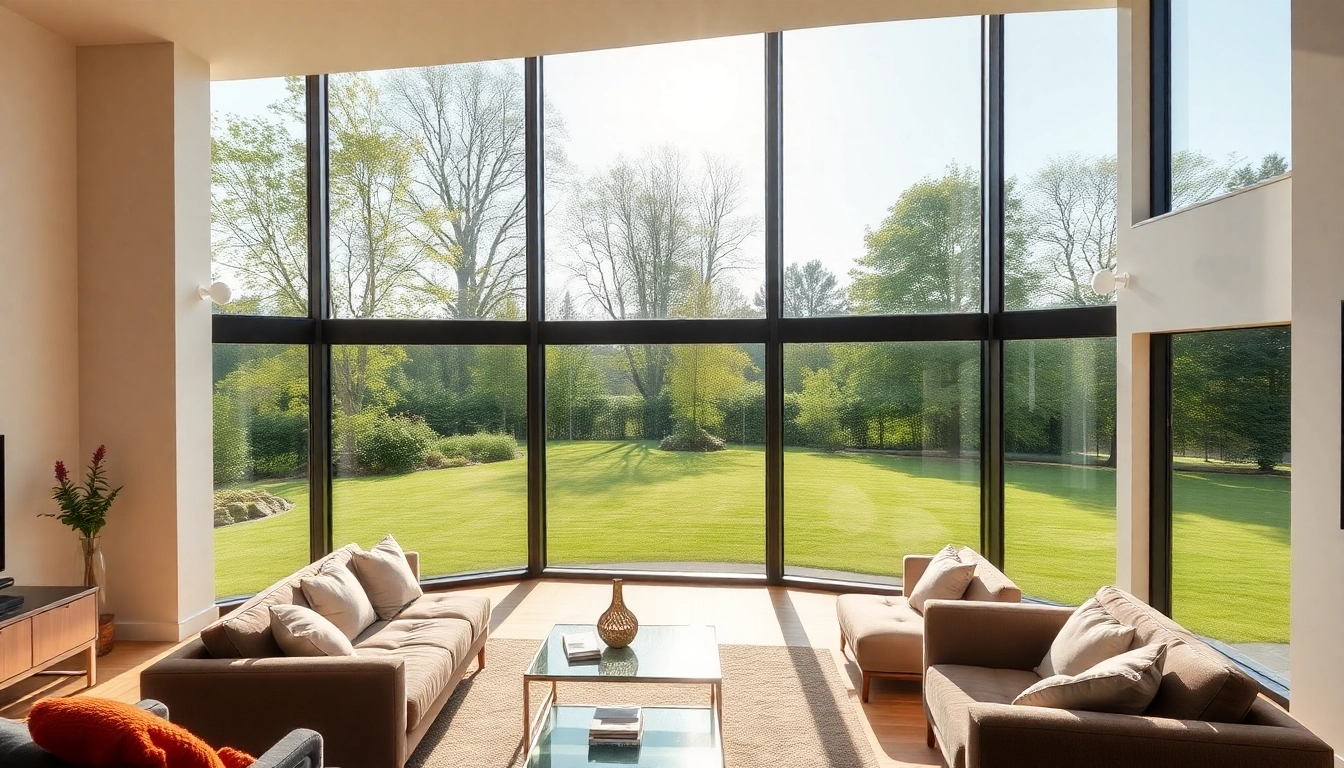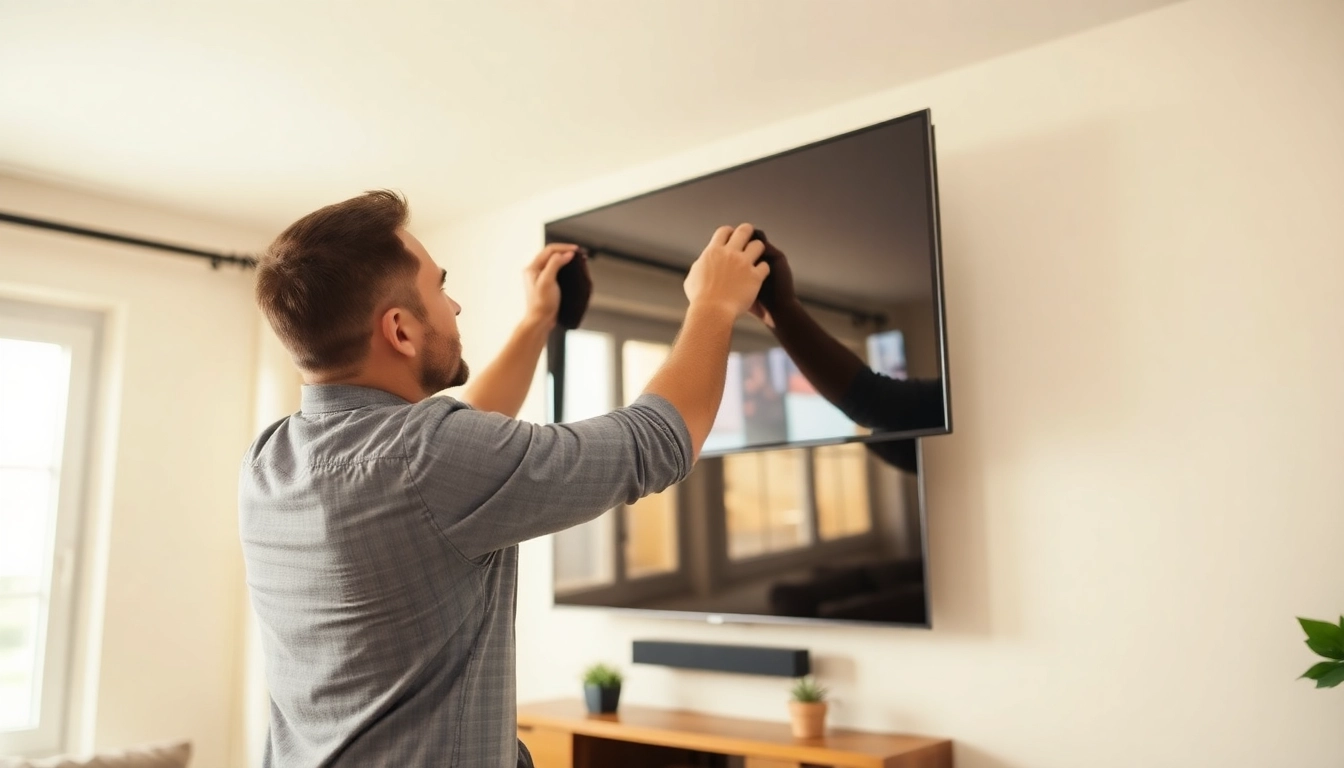Understanding the Basics of Interior Painting
What is Interior Painting?
Interior painting refers to the process of applying paint to the interior surfaces of residential or commercial spaces. This vital aspect of interior design enhances aesthetic appeal, provides protection, and can even influence the mood of the occupants. Whether it’s refreshing a single room with a new color or embarking on an entire home renovation, this task requires knowledge, the right tools, and a clear plan of action. For those looking to explore the nuances of interior painting, an understanding of various techniques and principles is essential.
Key Tools and Materials for Successful Projects
The success of your interior painting project largely depends on the tools and materials you choose. Here’s a rundown of the essentials:
- Paints: Select high-quality paint appropriate for the surface. Latex paints are common for interior walls due to their easy application and quick drying times.
- Brushes and Rollers: Use brushes for corners and edges, while rollers can cover large wall areas effectively. Different nap lengths affect the texture of the finish.
- Drop Cloths: Protect your floors and furniture with heavy-duty drop cloths to prevent spills and splatters.
- Painter’s Tape: For crisp edges and a professional look, use painter’s tape along moldings, windows, and ceiling lines.
- Primer: A good primer helps paint adhere better and can prevent stains from bleeding through.
- Sandpaper and Scrapers: Essential for preparing surfaces and ensuring they are smooth.
- Safety Gear: This may include gloves, goggles, and masks, especially when dealing with strong fumes or older paint that may contain lead.
Choosing the Right Paint Finish for Your Needs
Paints come in several finishes, each with distinct properties suited for different applications and aesthetics:
- Flat: Ideal for ceilings and areas with little wear, as it hides imperfections well but is not washable.
- Satin: Offers a soft sheen, easy to clean, and works well in moderate-traffic areas.
- Eggshell: A balance between matte and gloss, suitable for living rooms and bedrooms.
- Semigloss: Great for high-moisture areas like kitchens and bathrooms, as it is durable and easy to wipe down.
- High Gloss: Provides a striking finish and works best for trim and moldings, reflecting light beautifully and making small spaces appear larger.
Preparing Your Space for Interior Painting
Essential Steps to Prepare Walls and Furniture
Preparation is crucial in ensuring a smooth application of paint. Here are the steps to prepare your space:
- Clear the Area: Move furniture away from the walls and cover it with drop cloths.
- Clean Surfaces: Dust and wash the walls with a mild detergent solution. A clean surface helps the paint adhere better.
- Repair Imperfections: Fill in holes and cracks with spackle or joint compound, and sand the areas smooth.
- Remove Hardware: Take off any hardware (light switch covers, outlet covers, door knobs) to achieve even painting.
- Masking: Use painter’s tape to mask off areas that you don’t want to paint.
Creating a Safe and Efficient Workspace
To create a conducive workspace for your interior painting project, consider the following tips:
- Ensure Adequate Ventilation: Open windows and doors to allow airflow, reducing fumes from paint.
- Organize Tools and Materials: Keep everything you need within reach to minimize interruptions and disarray.
- Set Up a Ladder Safely: If working on high areas, ensure your ladder is stable and positioned correctly.
- Establish New Working Hours: Choose a time when your household is less active to decrease distractions.
Choosing the Perfect Color Palette for Your Home
Your color choice significantly impacts the atmosphere of your space. Here are some factors to consider:
- Lighting: Natural and artificial light affects how colors are perceived. Test paint swatches in various lighting.
- Room Function: Consider using calming colors in bedrooms (like soft blues and greens) and more vibrant hues in creative spaces (like yellows and oranges).
- Flow and Harmony: Ensure your color selections work harmoniously with adjacent rooms to create a cohesive design.
- Accent Walls: Use bold colors on a single wall to create a focal point without overwhelming the entire room.
Expert Techniques for Flawless Interior Painting
Common Painting Methods and Where to Use Them
Understanding different painting techniques can improve your results:
- Roller Technique: Ideal for covering large areas quickly. Use a roller for the bulk of the wall.
- Brush Techniques: Best for edges and contours. Dip the brush lightly in paint and use a vertical stroke for even coverage.
- Spray Painting: A fast method for large areas or unusual surfaces, but requires careful preparation to avoid overspray.
Tips for Cutting In and Blending Paint
Mastering the art of cutting in can create a professional finish:
- Load your brush properly—don’t over-saturate to prevent drips.
- Work in sections to minimize dry lines and ensure seamless blending of colors.
- Use a damp brush to help blend edges where two colors meet.
Using Painter’s Tape for Clean Lines
Painter’s tape is a powerful ally in achieving clean lines:
- Apply Tape Correctly: Ensure it adheres well to the surface and overlaps into adjacent areas.
- Remove Tape Timely: Remove it while the paint is still slightly wet to avoid pulling off dried paint.
- Use It Sparingly: Over-taping can lead to bulky paint edges; strive for a balance between clean lines and natural transitions.
Cost Considerations for Interior Painting
Estimating the Cost of Professional vs. DIY Painting
Understanding the financial aspects of painting can help you budget effectively:
Hiring professionals can range from $1,800 to $10,000, depending on the job’s complexity and size. DIY costs typically involve purchasing paint and supplies, which can range between $200 and $1,000 for smaller projects. This significant difference in expense encourages many homeowners to consider doing it themselves.
Factors Influencing Painting Costs
Several factors can affect your budget when planning an interior painting project:
- Room Size: Larger rooms require more paint and time, thus increasing costs.
- Paint Quality: Higher-quality paints may cost more initially but generally offer better coverage and durability.
- Prep Work: Additional costs can arise if walls require significant repair work before painting.
- Location: Prices can vary based on geographical area, with urban settings often commanding higher fees due to demand.
Budgeting for Quality Paint and Supplies
Quality matters immensely when it comes to paint. Investing in premium paints can initially seem expensive but often saves money in the long run by reducing the need for frequent repainting and repairs. Here are budgeting tips:
- Research Brands: Compare different brands and types of paint. Look for reviews and recommendations.
- Purchase in Bulk: Buying larger quantities may save you money overall if you’re painting multiple rooms.
- Consider Seasonal Sales: Many retailers offer discounts around holidays or seasonal changeovers—take advantage of these.
Maintenance and Aftercare for Interior Painted Spaces
Best Practices for Cleaning and Maintaining Painted Walls
Once your painting project is complete, maintaining the integrity of your walls is essential:
- Regular Dusting: Dust surfaces regularly to keep them fresh and clean. Use a microfiber cloth or a duster.
- Spot Cleaning: For stubborn marks or stains, use mild soap and water, as abrasive materials or strong cleaners can damage the paint.
How to Repair and Touch-Up Paint Damage
Despite your best efforts, wear and tear may occur. Here are steps to address it:
- Identify the damaged area, and clean it gently.
- Use primer on bare spots before applying touch-up paint.
- For larger areas, consider repainting the entire wall segment for a consistent finish.
Extending the Life of Your Interior Paint Job
Lastly, consider these tips for ensuring your paint lasts:
- Control Humidity: Keep rooms well-ventilated to reduce moisture that can cause paint to peel.
- Use the Right Fixtures: Avoid using abrasive cleaning tools that can scratch or damage painted surfaces.
- Update Grime Protection: Regularly inspect and update surfaces, as grime can lead to premature paint degradation.



